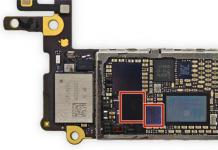An analysis of the quality of communication and the completeness of the coverage area shows that MTS is the clear leader among all cellular operators. It has the maximum number of base stations and the widest coverage. The coverage area of MTS allows you to count on the availability of communication even in the most distant corners of Russia. In this review, we will tell you about the coverage of the operator in Moscow and the Moscow region, as well as the quality of communication in the Russian regions.
MTS coverage map in Moscow
The mobile operator MTS has spread networks of several generations at once on the territory of Russia - the second, third and fourth. This allows you to rely not only on high-quality voice communication, but also on high-speed Internet access.
If we look at the coverage area of MTS in Moscow and the Moscow region, we can note that the central part of the capital is covered a little more than completely - networks operate here in 2G, 3G and 4G standards. The coverage area of 2G is the widest, since these networks appeared very first. Both the oldest and newest mobile phones can work here- in the priority order set in the user settings, they try to connect to the networks of the latest generation. For example, having a handset with LTE support at your disposal, you can enjoy high-speed Internet almost anywhere in the capital.
The 3G coverage area from MTS is somewhat narrower than the coverage area of the previous generation. Base stations are installed only in the territories of settlements. It is worth driving a little deeper, as the connection is interrupted. But in general, the coverage remains quite wide, which cannot but please fans of high-speed Internet access. The 4G coverage area of MTS in Moscow and the Moscow region is somewhat similar in coverage to the 3G area.
The center of the capital and the space outside the Moscow Ring Road are covered almost completely. As you move away from Moscow, "piglets" with signal reception in the LTE standard begin to become more rare. This is due to the narrow coverage of individual base stations, and it is not economically profitable to develop a network where there is no accumulation of subscribers.
Please note that the coverage area published on the MTS website was generated by a computer. It does not take into account the terrain and other conditions for the propagation of the radio signal. Because of this, the real MTS coverage area can vary greatly in one direction or another.
MTS coverage area in Russia
Here are the features of the Russian coverage:
- Wide area 2G - covers not only settlements, but also intercity areas;
- Good coverage in the 3G standard - caught in many areas, including suburban ones;
- A small broadcasting area in the 4G standard - the maximum LTE coverage from MTS is visible only in the Krasnodar Territory and in some central regions of Russia.
In this way, traveling around our country, we can always count on a good quality of communication. It is also confirmed by Roskomnadzor, which conducted its own investigation and found out which of the domestic operators has the largest coverage. This is also confirmed by the MTS company itself, boasting of the maximum number of base stations with high-speed Internet in the LTE format.
On the map of the MTS coverage area, another interesting opportunity awaits us - we can look at future plans for the development of the network. This is where data on the expansion of coverage is published - for this you need to put a corresponding checkmark on the map. Please note that MTS also offers rather unusual solutions for creating local base stations with a radius of up to 20 meters - these are compact subscriber terminals "Sure reception" operating via Internet channels at a speed of at least 1 Mbps.
Today, portable subscriber terminals (femtocells) with a short range are used to improve the quality of communication at airports, large shopping centers, business centers and other large reinforced concrete buildings.
Today, many users connect to MTS because they know that this operator provides the largest reception area in the Russian Federation. For 2017, the MTS zone covers 98 percent of Russia. Therefore, MTS communication is available almost anywhere in Russia. Even Roskomnadzor confirmed that MTS has the most significant network coverage.

3G and 4G coverage
The operator has been working on the Russian market since 1993. The 3G coverage area is quite wide - a high-quality signal is caught in many areas, including suburban ones. MTS 3G Russia is available even in the most remote areas of the country, namely in the Kaliningrad region, Chukotka and the mountain villages of Dagestan. The speed with which information is transmitted in 3rd generation networks has reached new record values - over sixty Mbps.
MTS 4G is growing rapidly where the infrastructure already exists. The latest technologies allow you to perform all the necessary upgrades for outdated base stations and achieve speeds of 300 Mbps. The coverage area of MTS in Russia is provided by 4G towers in 83 subjects of the country, which is considered a record figure.
As a result, the company ranks first in the number of 4G towers. The separation of the operator became noticeable back in 2015. But for an ordinary user, this difference is not quite noticeable: MTS is only five percent ahead of such operators as Beeline and Megafon.
The coverage area of the MTS operator in the center of Moscow and the area outside the Moscow Ring Road has reached its limit values. As you move away from the capital, there are fewer patches that receive the LTE signal. This is due to the fact that individual base stations do not cover the area very widely, and the development of the network where there is no accumulation of users is not economically justified.
Thus, having a cell phone that supports LTE, the subscriber will have access to high-speed Internet almost anywhere in Moscow. The same can be said about St. Petersburg, as well as the Leningrad region. In the Urals, and at the same time the territory located closer to Siberia, 4G LTE covers only regional cities and surrounding areas with high quality.
4G coverage map and unusual solutions
Before choosing a specific one, the user must make sure that there is a reception area for the appropriate technology in his locality.
If we look at the 4G coverage map in more detail, we can see that the proposed highest speed for tariff plans is 260 Mb / s. This is quite enough for today for all the necessary operations in the global network.
The 4G network coverage map helps to determine whether the user is in the operator's coverage area. You should pay attention to the fact that when the subscriber moves at a speed of less than twelve kilometers per hour (that is, on a bicycle or on foot), the Internet will work faster, and when in a car, it will be slower. If the subscriber moves between coverage areas, then the connection switches seamlessly, that is, absolutely imperceptible to him.
There is another good opportunity on the MTS map - citizens can see future plans for the development of the mobile network. It is on them that there is information about expanding network coverage - for this you need to put a certain mark on the map.
MTS can offer its subscribers and very non-standard solutions that allow you to create local base stations with a coverage of up to twenty meters - these are small terminals called "Confident Reception". They work through online channels with a speed of at least 1 Mbps.
MTS is one of the largest companies providing mobile communication services. It was one of the first to distribute such types of Internet connections as 3G and 4G on the territory of the Russian Federation. At the beginning of 2016, MTS took a leading position in terms of the number of installed towers for 3G and 4G, expanding the boundaries of Internet coverage throughout the country. For this reason, most users of high-speed Internet use the services of this mobile operator.
Structure of communications
Currently, MTS provides a choice of several telecommunication services based on three standards:

- 2G - mobile telephony zone;
- 3G - a zone of cellular communication and services, which include: Internet connection at a limited speed, voice mail, conference calls;
- 4G is a zone of high-speed Internet access to multimedia, digital television, audio and video communications.
The mobile operator has built a fairly complex telecommunications infrastructure, thanks to which subscribers receive high-quality services that meet the requirements for confidentiality and signal stability. The uninterrupted Internet connection and signal strength largely depends on the number of installed base stations.
In the absence of serious interference, the data transfer rate using a 3G connection is 40 Mbps, and 4G - 260 Mbps. Most mobile Internet users prefer to use the fourth generation technology. However, 4G appeared relatively recently, so Internet distribution stations have not yet been installed in all regions of the country.
3G, 4G coverage map from MTS
You can find out the possibility of 3G and 4G, as well as the speed of the Internet connection in a particular region, using a special map. It displays interactive details for each federal district and its constituent regions. Using the map, subscribers can determine the availability of coverage not only in the entire region, but also in specific settlements.

3G coverage area
3G base stations are located in strategically important regions of the country. So far, it has not been possible to achieve full coverage throughout the country, but the number of installed towers is increasing almost daily. They operate within a radius of several kilometers: the more of them, the better the quality of the transmitted signal.

The maximum coverage of 3G operates in the southern, northwestern and eastern regions of the country. Much fewer base stations are located in the northeast near the Ural Mountains. Among the most "staffed" areas from the Siberian region include:
- Kemerovo;
- Krasnoyarsk;
- Barnaul;
- Omsk;
- Tomsk.
In the mentioned cities, the 3G coverage area is quite large, but the maximum number of towers is set in Moscow. High-speed Internet, including 4G, operates on 70% of the area of the Moscow Region.
4G coverage area
The maximum speed of the Internet connection allows subscribers to perform almost any Internet operation. It should be noted that the level of 4G signal is not the same in all regions of the country, and in some areas it is not yet available at all. The maximum number of 4G base stations is located in the following regions:

- Major cities in the Central Federal District;
- St. Petersburg and adjacent territories;
- Neighborhoods of the Urals and the Siberian Territory;
- All Moscow and part of the Moscow region.
Remote regions of the country are not yet included in the 4G coverage area, but MTS plans to expand the high-speed Internet coverage area.
Reach Features
The maximum number of 3G and 4G distribution towers is located in densely populated areas - the Southern and Central regions of the country. Each of them propagates a signal within a radius of several kilometers. The farther the subscriber is from the tower, the lower the data transfer rate will be during network operation.

At a large distance from the base station, attenuation of radio frequency signals occurs. But this does not mean that, if necessary, the subscriber will not be able to use high-speed Internet. To increase the coverage of 3G and 4G, it is recommended to install external antennas.
MTS offers to use the subscriber terminals "Confident reception" (femtocells), with the help of which you can create a local base tower with a range of 15-20 meters. It works with internet channels at speeds from 1 Mbps. Femtocells are often used to boost the signal in business centers, shopping malls, airports, etc.
How to make an Internet speed test from MTS
Our website provides a map of the 4g mts coverage area, by which you can determine in which areas of the city you can expect connectivity. But keep in mind that to work with 4G networks, you must have a phone that supports such networks at the hardware level. As well as a SIM card that will work in this mode.
The mts 3g coverage map indicated on the MTS website covers a much larger area, and most older devices are designed to work with this network. So even if the map shows that a 4th generation network is operating in the area, it will not necessarily be the speed as indicated in the advertisement.
The theoretical upper limit of the 4G network speed is 300 Mbps, and the claimed 4g coverage area continues to grow. But the physical capabilities of the system (both the user's device and the company's servers and transmitters) significantly reduce this figure. It is well above the "ceiling" for 2G, which was 512 kbps, but does not yet reach the capabilities of wired Internet.
To set the actual connection speed, you need:
- determine which network is declared in the specified location according to the coverage map - 3g or 4g.
- see which network is highlighted by an icon on the smartphone screen;
- log in via the Internet to one of the applications that determine the speed of the network (Speedtest);
- press the "Start" button.
The system shows three main indicators of speed:
- Dowlink (the main indicator, the speed of downloading data to the phone);
- Uplink (speed of data transfer from phone to network);
- Latency (delay time, or data transfer from the device to the server and vice versa).
According to the latest data at the beginning of 2018, the average speed of receiving data in Moscow was 3272 kbps.
According to MTS plans, the 4g coverage map in Moscow and other large cities of the Russian Federation is constantly expanding, and server capacities are increasing, trying to support the growing number of users. And the real speed of transmission and reception of information is growing.
Despite the fact that the coverage area of the MegaFon mobile operator extends to the entire territory of the Russian Federation, however, this does not mean at all that if the subscriber is located in any corner of the country, the phone will be in the network coverage area. In terms of scale, the MegaFon network covers a vast territory, but still not 100% of the entire area of the country. Each subscriber, for sure, at least once, has come across a situation when, while driving along country roads, he could not make a call due to the lack of a network.
What are the features of the MegaFon coverage map
When purchasing a SIM card of any operator, subscribers usually do not pay attention to the coverage area. The thing is that within the city, as a rule, there are no problems with communication. Of course, there are places where it is not possible to pick up a signal from a nearby station. These can be rooms located on the ground floor in buildings with thick walls, various gateways, some construction projects.
You should think about the MegaFon coverage area when changing your place of residence, and not within the city, but when you plan to move to another locality or go on official business outside your region. In such situations, it is important to know whether the network will be caught? As for large regions, then in this case you should not worry. But if you need to visit a small village in the outback, then it’s not a fact that everything will work out without problems.
When studying the MegaFon coverage map, it is clear that there is no network:
- In a number of regions of the Far East and the Far North;
- In the tundra and taiga;
- In the forest belt and in areas without settlements.
The operator installs base stations only in those places where it is economically advantageous. The network may not be in those settlements on the territory of which the coverage of other mobile operators is valid. It is possible that if another network appears, the number of subscribers will not be maintained at the appropriate level, and money and a lot of money will be invested in the creation of communications. This is the main reason why operators do not want to expand the coverage area of the network.
In many mountainous areas there is a network of two or even one provider - in some, the Megafon coverage area prevails, in others - another operator.
Due to the fact that the site contains a computer version of the coverage map that does not take into account the characteristics of radio wave propagation, the coverage area displayed on it may not coincide with the real situation. That is, in reality, the network may be absent at those points where, according to the map, it is.
Internet coverage area MegaFon
In modern conditions, access to the network is important for most subscribers, so you should look at the map and find out the Internet coverage areas:
- The 3G network operates in most of Russia;
- The 4G network is available only in large regions: in Moscow, St. Petersburg, Orenburg and others. As for other regions, the 4G coverage area operates locally.
3G coverage
4G coverage
MegaFon was among the first to launch a 4G network in Moscow and the Moscow region. It still holds the leading positions, slightly yielding to MTS. As practice shows, it is best to connect to the services of this operator in the Northern, Eastern and Southern administrative districts.
These areas are leading in terms of average and maximum Internet connection speeds. But in the rest of the capital, the 4G network coverage area does not work much worse - the backlog does not exceed 1-2 Mb / s.
Where can I see a map of the coverage area
A map of the operator's network coverage areas is posted on the company's official website. To view it, you need to go to the page "Support" - "Coverage map". This map will allow you to get a complete picture of the scale of the network in a particular region.
- The 2G network has the largest coverage area;
- The 3G network covers a smaller area than 2G;
- A 4G network with a connection speed of no more than 150 Mb / s mainly operates in large regions and smaller cities;
- 4G+ network with connection speed no more than 300 Mbps is available in a limited number of cities.
As already mentioned, the maps contain approximate data, which in real conditions may differ.
An interactive map allows you to enter an address and see where your area's coverage is locatedYou can check your house in the Moscow region on the map. This is an interactive map, where it is possible to display the signal of any operator, tick the operator, and what level of coverage you want to see "3G 4G" You will be offered the opportunity by dragging the mouse to find the location of your settlement on the map. Select yours and you will see in which coverage area your locality is located.
1. In the operator selection window, check the box of the required network.
2. The map will display a graphical representation of the network coverage in color.
3. Drag and drop the map to your locality, scale with the mouse wheel.
4. On the map, you will see a shaded area indicating BS coverage
5. Find the shaded area and your location of the country house.
And now, compare how much the shaded area closes your village and follow the conclusions about the speed of the Internet
Instructions for using the card

The network coverage area has been developing since 2005. A significant part of the Moscow region can currently use the wireless fast Internet provided by our company. Every year the network is upgraded using the latest data transmission technologies and becomes more and more popular, providing its customers with favorable rates. Omstel keeps pace with modern mobile technologies. The 2G generation is already dying out and is being replaced by 3G and the recently appeared 4G.
3G coverage
3G coverage provides subscribers with high-quality Internet thanks to the HSDPA protocol. It effectively uses its radio channel and increases the connection speed. For reliability, several information transfer protocols are used. It all depends on the signal strength on the subscriber's device. Wireless channel owners get access to HSPA + technology, while some modems only support 3G. 3G coverage operates in the decimeter range of 2 GHz. Data transfers can now be carried out at a speed of 20 Mbps. This makes it possible:
- watch movies and videos online;
- download video and audio files;
- communicate via video.
In the Moscow region, about 80% of the territory is available for 4G connection. In the city itself, this network covers 99 percent of the territory. The Internet connection speed is affected by the subscriber's distance from the base station and network congestion. Even if the subscriber has unlimited Internet, the operator's priority is ordinary voice communication. But this prevents you from continuously using high-speed Internet.
4G coverage
Our company connects the fourth generation of the Internet - 4G. The speed of using this channel reaches 50 Mbps. Now you can download heavy files or run the latest applications even faster. 4G coverage covers mainly cities such as Moscow, St. Petersburg, Yaroslavl, Samara and others. At the moment, the company is working to ensure that as many people as possible can take advantage of its offers and connect to 4G. We also offer routers capable of processing information at a speed of 100 Mbps. When connecting, you can connect a special USIM card. It works on any device and improves security. We have an affordable pricing plan.

































